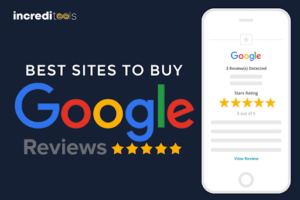How do I Run Profitable YouTube Ads?

Even if your video ad is compelling, if your YouTube campaign needs to be set up correctly, generating clicks or converting viewers into buyers is challenging. Even if your video is interesting, choosing the wrong ad objective or format can result in a losing campaign. This fact necessitates that you create your commercials with the same level of care that you do your storyboarding, scriptwriting, and video production.
- Create a Google Analytics account.
Google Analytics keeps tabs on how viewers engage with your videos. You’ll know the advertisements visitors will most likely click on and stay on for the longest. You can use this information to target future campaigns more directly at the customers who will most likely buy your goods. For instance, if Google Analytics reveals that one ad is substantially more profitable than the others, you can bid the total amount allotted for that campaign while pausing the others.
- Account setup
It would be best if you first gave your Analytics account a name. Then, pick what Google can do with the data your analytics account collects by visiting the Account Data Sharing Options. Although the permissions you grant have no bearing on the Analytics or campaign features you may use, they help Google enhance its ad network and increase the profitability of your campaigns. Hence, check all the boxes if your company’s data-gathering policy permits it.
- Setup of the property
The property is the location’s name where Google will gather information about user behaviour, such as YouTube for your YouTube-based ads. To know what platform your property is on, give it a name. This platform will set by http://buyyoutubeviewsindia.in.
- Commercial information
Share this information with Google Analytics to improve your experience. Google Analytics makes suggestions based on the size and industry of your business. You may have noticed beneficial aspects with the aid of a tailored experience. Choose the industry that is most similar to your primary line of business if you can’t find yours in the dropdown menu. A goal image from Google Analytics. a section of the guide on how to put up a YouTube video advertisement
- Connect your YouTube channel to your Google AdWords account.
Google receives information about your videos when you link your Google AdWords account to your YouTube channel. It will see your channel’s number of views, audience demographics, and engagement analytics. With the help of this information, Google can target advertising at readers of your material who might become subscribers.
- With the Expert Mode of Google AdWords, specify a specific goal.
The same film can be promoted using two distinct types of advertising, and the outcomes will vary. Because of this, selecting an advertisement type that aligns with your company’s objectives is crucial. In general, you can only utilise in-feed video advertisements and in-stream ads. You have many more options to pick from in Google AdWords Expert Mode.
Three different forms of video ads, and in-feed—are used for both of these goals:
- Before, during, or after a video session, in-stream adverts are played. They assist you in directing visitors to landing pages or introducing your business to potential customers.
- In-feed video advertisements can be seen on the homepage, search results, and related videos section of the YouTube app or website.
- A bumper ad is a video ad that lasts no more than six seconds. Businesses can use them to impart a memorable, bite-sized message about their brand while barely interfering with the video the customer is watching, considering brands and products.
- This advertising effort seeks to attract potential clients and convert them into leads. It has two ad formats, which are campaign subtypes.
There are ad sequences first. They employ bumper advertising, in-stream ads, or a combination of both to tell a tale over several episodes. An ad sequence is helpful for campaigns with numerous films or assets. In research by Google and Ipsos, video ad sequences were 74% more memorable than a single, skippable, 30-second in-stream commercial.
Brand recognition
This campaign is designed to get the most incredible attention to your brand, which is advantageous if you’re entering a new market or introducing a new product.
As with product and brand consideration campaigns, you can utilise an ad sequence to construct a tale that introduces viewers to your brand. But two new campaign subtypes are available.
The video reach campaign subtype uses skippable in-stream advertising, bumper ads, or both to maximise reach for a given budget. Very effective for reaching people are bumper stickers.
- Choose a bidding strategy.
Video Modify This Template
When you attempt to accomplish a goal, Google will charge you a certain amount based on your bidding technique. The incorrect bidding technique could cause Google to waste an excessive budget on a small number of conversions or website visitors.
Object CPM
You can tell Google AdWords the average cost per thousand impressions it should incur to display your advertisement 1,000 times. The algorithm will then hunt for website users who share characteristics with your target demographic and will likely watch your complete advertisement.
CPM viewable
Several websites have auto-playing videos, so even if users don’t watch your movie, this counts as impressions. Google only charges you for visible CPM if 50% of an advertisement displays on a reader’s screen for two seconds or more.
Highest CPV
In the Highest CPV bidding strategy, you determine the maximum amount Google should pay for each view or engagement, such as by clicking the thumbnail of your video. If you optimise for views, Google will only charge you if someone sees your video for at least 30 seconds or the entire video if it is less.
Use Google AdWords tools to choose where your advertisements will appear.
Where your advertisement appears affects how well it does. A campaign that targets websites unrelated to your goods.
To display your advertisements on the websites your target client visits, use Google AdWords’ keyword, subject, and placement options. While most ad viewers will be interested in your product or sector, this specificity aids the algorithm in maximizing your bidding strategy.








